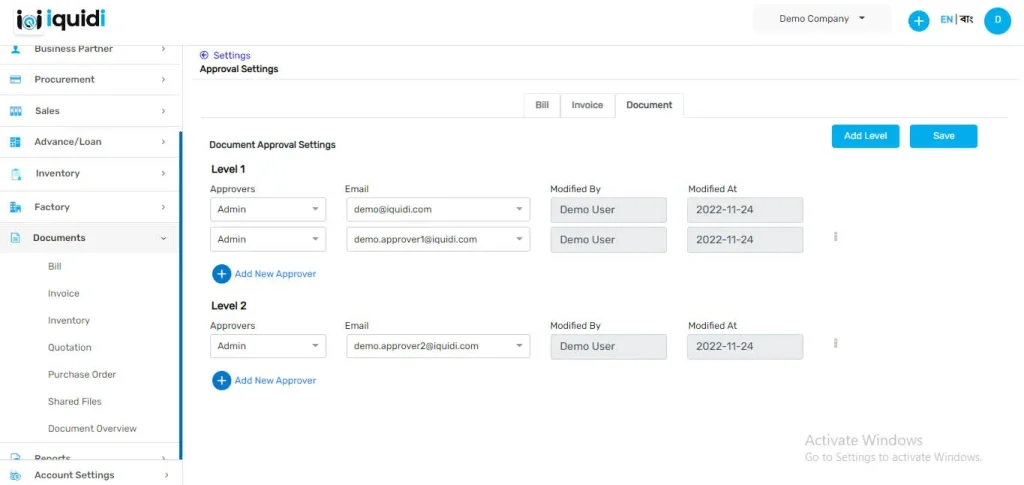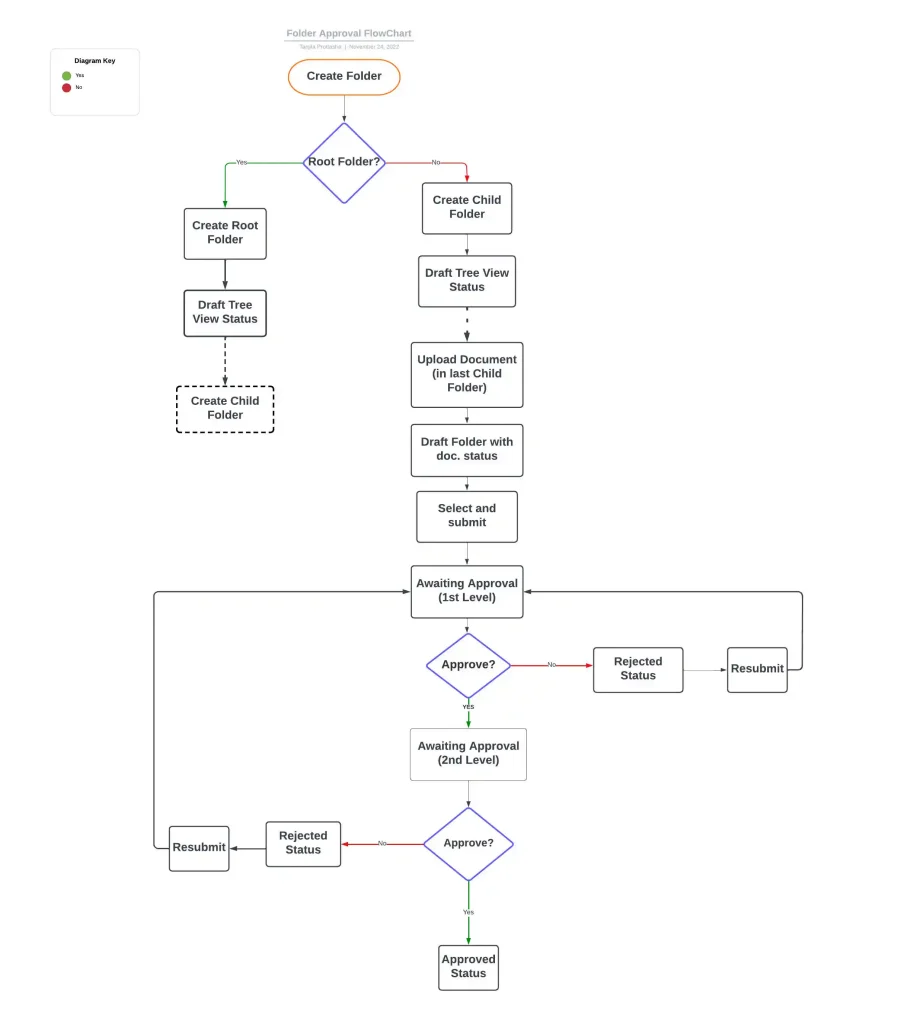In today’s fast-paced business world, companies are inundated with massive documents – from contracts to invoices, emails, project files, and more. As businesses grow, managing these documents efficiently becomes crucial. This is where a Document Management System (DMS) comes into play.
A Document Management System (DMS) is a software solution that helps businesses capture, store, manage, and track digital documents and images of paper-based information. It streamlines business operations, increases productivity, and enhances collaboration across departments. Whether you’re a small startup or a large enterprise, a DMS can be the key to simplifying document management and boosting overall efficiency.
This article will examine the core document management system features and explore why businesses need them for smoother, more secure, and more cost-effective operations.
What is a Document Management System (DMS)?
A Document Management System is a digital solution that allows businesses to store, organize, and retrieve documents efficiently. The system can handle digital and scanned paper documents, making it easier for companies to manage information without relying on physical storage.
A Document Management System is a central repository for your business’s documents, ensuring they are stored securely, easily accessible, and well-organized.
Key functionalities typically include:
- Document scanning and capture (for paper documents)
- Storage and indexing
- Version control (track changes)
- Collaboration tools (share documents securely)
- Document retrieval and search functionality
With the increasing demand for remote work and digital solutions, a DMS has become essential for businesses looking to optimize their document workflows.

Document Management System Features:
To fully appreciate the value of a DMS, let’s take a closer look at document management system features:
- Centralized Document Storage: A document management system features a centralized digital space where all documents are stored. This reduces the need for physical file cabinets, making document management more efficient.
- Searchable Document Index: One of the most valuable document management system features is its search functionality. You can quickly find any document using keywords, tags, or metadata, saving you time and effort.
- Version Control: Version control helps you track document changes over time. This feature ensures you always have access to the most current version while retaining the history of changes for reference.
- Access Control and Security: Protect sensitive documents by setting access restrictions. Only authorized personnel can view, edit, or share specific documents, helping to maintain confidentiality and compliance with industry regulations.
- Collaboration Tools: Modern document management system features often include tools that allow teams to collaborate on documents in real-time. These tools enable simultaneous editing, commenting, and sharing, improving productivity and communication.
- Cloud Integration: Many DMS solutions today offer cloud-based capabilities, allowing businesses to store documents online. This ensures accessibility from anywhere and provides a scalable solution for growing companies.
- Document Workflow Automation: A DMS can automate routine document-based processes like approval workflows, notifications, and task assignments, significantly reducing manual labor.
- Mobile Accessibility: Mobile-friendly DMS platforms allow you to access your documents from smartphones and tablets, enhancing mobility and convenience. Which makes it one of the best document management system features.

Benefits of a Document Management System for Businesses
Implementing a Document Management System offers a range of benefits, including:
- Increased Productivity: Manual document management can be time-consuming and inefficient. With modernized document management system features, employees can quickly locate, share, and collaborate on documents, freeing valuable time for more critical tasks.
- Enhanced Security: A DMS protects your documents with encryption, user access controls, and backup systems. Sensitive data remains secure, reducing the risk of data breaches.
- Cost Savings: By transitioning to a digital system, businesses can significantly reduce paper, printing, storage, and physical space costs. Moreover, digital document workflows lower administrative costs, making business operations more cost-effective.
- Compliance and Legal Requirements: Document management system features help ensure that documents meet legal and compliance standards for businesses in regulated industries. Records are timestamped and stored securely, which helps with auditing processes.
- Better Collaboration: A DMS facilitates seamless collaboration, whether your team is in the office or working remotely. It allows multiple users to access, edit, and comment on documents, ensuring everyone is on the same page.
- Disaster Recovery: Businesses can ensure they have a disaster recovery plan by keeping documents securely in the cloud or backed up in multiple locations. In a system failure or natural disaster, digital documents can be restored quickly, minimizing downtime.
📢 Did You Know?
Businesses that adopt paperless office solutions see a 40% reduction in operational costs! (Source: AIIM)

Paperless Office Solutions: How a DMS Can Help
The idea of a paperless office has become a popular goal for businesses seeking to improve efficiency and reduce costs. A Document Management System is a crucial part of achieving this goal. By digitizing paper documents and organizing them in a DMS, companies can drastically reduce their reliance on physical paper and file storage.
With paperless office solutions, businesses can:
- Save physical space that would otherwise be used for filing cabinets.
- Streamline document retrieval and eliminate the need for paper-based processes.
- Promote environmentally sustainable practices by reducing paper usage.
🌍 Eco Tip:
Reducing paper usage can cut your carbon footprint by up to 70%!

Cloud Based Document Management: The Future of DMS
As businesses increasingly move to remote work environments, cloud based document management has become more critical than ever. A cloud-based DMS stores documents on secure cloud servers, allowing users to access and collaborate on documents from any location with an internet connection.
Advantages of Cloud Based Document Management:
- Remote Access: Employees can access documents from anywhere, whether working from home, in the office, or on the go.
- Scalability: Cloud-based systems are easy to scale, making them ideal for businesses of all sizes.
- Cost-Effective: Cloud DMS typically requires lower upfront costs, as there’s no need for expensive hardware or IT infrastructure.
How to Choose the Right DMS for Your Business
Choosing the right Document Management System depends on your specific business needs. Here are some key factors to consider:
- Business Size and Complexity: Smaller businesses may only need basic document management, while larger enterprises may require advanced document management system features such as workflow automation and integration with other software.
- Security and Compliance: Ensure that the DMS provider offers strong security features and complies with industry regulations (e.g., GDPR, HIPAA) to protect your sensitive data.
- User Interface and Ease of Use: A DMS should be user-friendly and easy to navigate. Look for a system with an intuitive interface that requires minimal training.
- Integration Capabilities: The DMS should integrate seamlessly with other business tools, such as CRM systems, email platforms, and project management software.
- Cost: Consider your budget and look for a document management system with features that meet your needs without exceeding your financial resources.
👉 Related Read: Why Paperless Offices Rely on Document Management Systems

Why Implevista Offers the Best Document Management Solutions for Modern Businesses
Looking for a reliable way to manage your business documents? Implevista offers one of Bangladesh’s best document management solutions to help businesses of all sizes go digital, stay organized, and boost productivity. Here’s what sets our DMS apart:
✅ Cloud Integration – Access and manage your documents securely anywhere, anytime.
✅ User Access Control – Set role-based permissions to protect sensitive information.
✅ Version Control – Keep track of document edits and changes with complete revision history.
✅ Automated Workflows – Streamline approval processes and reduce manual work.
✅ Scalable for All Businesses – Our solutions grow with you, whether you’re a startup or a large enterprise.
✅ Enhanced Collaboration – Enable teams to work on documents in real-time, no matter where they are.
✅ Paperless Office Transition – Digitize your files and reduce dependency on paper.
With Implevista’s DMS, you’re not just storing documents but upgrading how your business works.

Document Management System: FAQs
- What is the difference between a Document Management System (DMS) and an Electronic Document Management System (EDMS)?
An EDMS typically refers to a more advanced version of a DMS with additional functionalities, such as workflow automation, document scanning, and version control.
- Can a DMS help with regulatory compliance?
Yes, a good document management system features will help with compliance by ensuring that documents are stored securely, easily traceable, and retrievable during audits.
- Is a cloud-based DMS more secure than a traditional on-premise system?
Cloud-based DMS often provides robust security features like encryption, backups, and multi-factor authentication, which can be more secure than traditional on-premise systems if appropriately managed.
- How much does a Document Management System cost?
The cost of a DMS varies depending on the provider, features, and the size of your business. Cloud-based solutions often offer more affordable pricing options with scalability.
- Can I integrate a DMS with my existing business software?
Many DMS solutions offer integration with other software, such as CRM systems, project management tools, and email platforms, to streamline business processes.
- How do I migrate paper documents to a DMS?
Most DMS solutions offer scanning tools that allow you to digitize physical documents and store them securely within the system.
- What kind of businesses need a DMS?
A DMS can benefit any business that handles large volumes of documents, from legal firms to healthcare providers, educational institutions, and even small startups.
- Is a DMS suitable for small businesses?
Many DMS solutions are scalable and designed to suit businesses of all sizes, including small enterprises.
- Can a DMS improve team collaboration?
Absolutely. DMS solutions provide real-time collaboration tools that allow teams to work together seamlessly, regardless of location.
- Is training required to use a DMS?
While many document management system features platforms are user-friendly, some may require basic training to familiarize employees with the systems.
In today’s digital age, a Document Management System (DMS) is no longer a luxury; it’s necessary for businesses that want to stay competitive, secure, and efficient. Whether you’re a small business looking to go paperless or a large enterprise needing streamlined workflows, a DMS can help you achieve your goals.
By adopting a DMS, businesses can improve collaboration, enhance document security, and reduce operational costs while contributing to a greener, more sustainable future. If you’re ready to take your business to the next level, consider implementing a cloud based document management system today.
👉 Ready to revolutionize your document management?
Contact Implevista today for a free consultation on how our cutting-edge DMS solutions can help your business stay ahead in 2025 and beyond!




